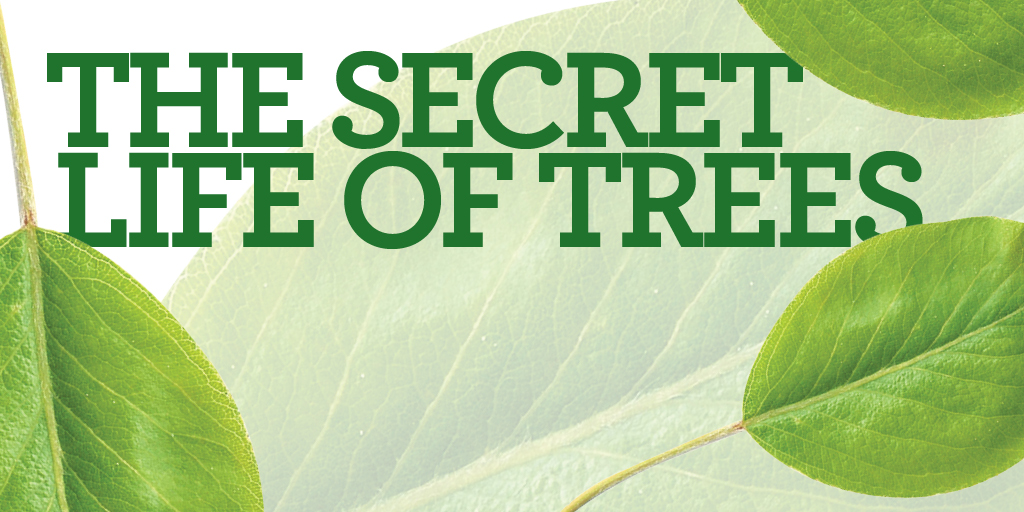The Secret Life of Trees

They are the omniscient spectator to the happenings of the outside world, gentle giants of green and brown whose colours change only to the tune of the crisp fall air serving as a reminder to grab that pumpkin spice latte.
Passed by a car heading to work, a walker out for an evening stroll, or even a bicyclist looking to up their cardio intake for the day, like an online dating app few take the time to ponder what's underneath and simply swipe by after brief observation.
This begs for the question, who really are these sturdy structures that align our parks, streets, roads and backyards?
Derived of a trunk, roots, branches, twigs and leaves, trees work endlessly (and without asking too much in return) to better our society on a consistent basis.
Amy Turnbull, master gardener and a science labratory technology co-ordinator in the School of Applied and Science at Fanshawe College recently connected with Interrobang to uncover our quiet neighbours.
They help prevent water pollution and can help filtrate our drinking water.
Trees act like sponges, slowing down the water fl ow from precipitation and lengthening the time it takes to reach lakes and streams. This allows for the natural processes wherein fungi and bacteria are able to clean the water properly before the water enters larger bodies of water.
The Massachusetts Institute of Technology (MIT) recently published an article detailing the fi ltration properties of trees. They found that when camping, taking a pine tree branch and removing its bark will create a fi ltration system that will purify water by trapping bacteria when lake water is poured slowly through the stick.
Trees have been shown to provide calming effects to the human psyche
“Spending time in nature has been investigated for its health benefi ts. These studies typically compare one group of people that spends time in an urban area devoid of greenspace to another group that spends time in a treed natural area. When participants self-report, those who spend time with trees perceive improved mental, social and physical health. When researchers measure the participants, those in nature have lower levels of stress hormones in their saliva, less anxiety, improved attention, lower pulse, and lower blood pressure. Research has found that as little as fi ve minutes in a greenspace can improve health.” Turnbull, said .
Additionally, The Ontario Urban Forest Council found that forests have been associated with “improved rehabilitation, faster hospital recovery rates, and a decrease in the severity of symptoms in attention defi cit disorders.”
Some trees provide the world's healthiest foods and contribute greatly to our economy.
Trees can grow fruits from apples and oranges to even coconuts, persimmons, grapefruits, pomegranates and many more which in turn create a supply for our economy. Apples alone, according to Agriculture and Agri-Food Canada had a Farm Gate Value of 188 million dollars for the year of 2014. The food provided from the trees are also able to feed animals such as birds and wildlife.
Strategically placed trees can reduce wintertime fuel and air conditioning costs by substantial amounts.
“Trees used in landscaping a property can have a signifi cant effect on household energy use. Coniferous trees (evergreens) planted to the north, west and east of the house reduce wind chill near the house and this reduces wintertime fuel use by 40 per cent. These same trees also decrease the amount of snow blowing around the house as their low branches trap the snow. Deciduous trees (trees that lose their leaves in the fall) planted to the south of a house can reduce air conditioning costs by 15 tok 50 per cent. Trees lower the temperature by shading and by releasing water vapour from the leaves. The air temperature under a tree can be 14 C cooler than the air temperature of a nearby blacktop. In the winter, the deciduous trees will allow sunlight to enter south facing windows and help to heat the house.” Turnbull said.
London, which is also known as the Forest City has shown to be well deserving of this moniker. “London is in the Carolinian forest ecosystem, which is home to 77 tree species. Of all the tree species in Canada, 60 per cent occur in our region! Some of our native trees include the sassafras, pawpaw, Kentucky coffee, cucumber, and tulip trees.” Turnbull, said.
These everyday superheroes are constantly under threat by human activity such as urbanization wherein mature trees are cut down to make room for new housing or retail developments. To counteract this, Turnbull recommended being proactive and added “You can reverse this trend and help protect trees in your area. Lobby city planners to prevent mature trees and forests from being cut to build new houses. Support local nature groups. Nature London is one such group that works tirelessly to protect local forests. Educate yourself about native tree species.”�














